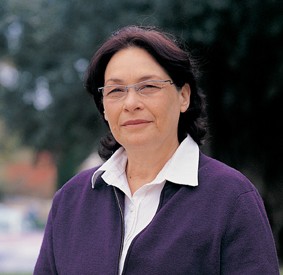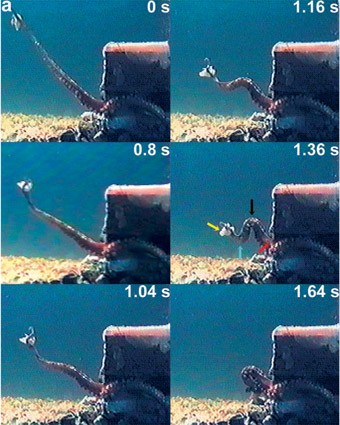The freedom to choose between many possibilities doesn’t always make life easier. For example, deciding which fruit to buy is simple if you’ve stopped by a roadside strawberry stand, but it can be confusing and time-consuming when shopping in an upscale supermarket that sells twenty varieties of apples, alone. Having too wide a choice between possible modes of action turns out to be taxing, demanding of large amounts of the brain’s resources.
The octopus has a similar problem in deciding how to move its eight tentacles. Each is completely flexible, allowing movement in any direction from any point along its length. In addition, the tentacle can be extended or retracted, further complicating the choice of movements. In contrast, the human arm moves from a limited number of joints, and movement at each is restricted to a fixed number of planes, or “degrees of freedom.”
A joint study by scientists at the Weizmann Institute of Science and the Hebrew University of Jerusalem has revealed how the octopus copes with the generous freedom of choice in limb movement nature has granted it.
Movements must be planned and coordinated if they’re to be efficient. In humans, the brain calculates and selects the best joint angles and combinations of muscle contractions for each movement. With its relatively small brain and nearly limitless possibilities for movement, how does the octopus manage? Prof. Tamar Flash of the Weizmann Institute’s Computer Science and Applied Mathematics Department and Dr. Benny Hochner of the Hebrew University’s Neurobiology Department and Interdisciplinary Center for Neural Computation have been on a quest for the last 11 years to understand how the octopus nervous system oversees the control of its unique physiology.
They have found that octopi, from all the possibilities open to them, stick to a more or less narrow repertoire of tentacle movement patterns. Each of these patterns, which in combination allow the octopus a wide range of movement, is circumscribed in its degrees of freedom. For example, to reach for an object, the tentacle bends in a kink that advances whip-like down its length - a movement based on only three degrees of freedom. This restriction reduces the number of variables the octopus brain must deal with to calculate the most efficient movement. The results of an earlier study by this research team, which appeared in the journal Science, showed the octopus brain does not bear the full brunt of planning and control in this complicated undertaking. Rather, the brain passes at least part of the task over to smaller “local brains,” fitted on each tentacle, that specifically deal with movement.
The most recent study, carried out in the framework of Dr. German Sumbre’s doctoral research in Hochner’s lab and published in Nature, adds another piece to the puzzle. To their surprise, the scientists noted that a specific movement, again carried out within limited degrees of freedom, is repeated each time an octopus brings a piece of food to its mouth. What’s more, this movement looks intriguingly like the movement of a human arm performing the same task.
Sophisticated computer analysis helped reveal that the tentacle, as it manipulates the captured food toward the mouth, becomes divided into three rigid segments and bends at the joints between them. The first segment, farthest from the body, functions much like a hand, while the other two appear to act as forearm and upper arm. These last two are always of equal length. The scientists think the tentacle’s “local brain” calculates the midpoint and divides the limb into segments. It then passes responsibility over to the central brain, which synchronizes the movements of the segments. It would appear, they say, that evolution has arrived at similar models of efficient, economic movement for both humans and octopi, the one through a rigid skeleton and the other through limiting the choice of movement patterns.
The researchers aim to apply what they have learned about tentacle movement to the world of robotics. Soft, flexible, yet easily controllable robotic arms might be advantageous in many situations for which robots are now being developed. Octopus-like limbs, for example, might allow a robot working in a disaster area to cover un-certain terrain; these robots would also be able to extend their appen-dages around corners, or reach into spaces where other types of tools or machine can’t fit. Such robots would be handy in a number of tasks, including helping out in rescue missions, neutralizing explosives, repairing ships underwater and even performing surgery - thin, flexible tentacles might one day be designed to navigate twisting intes-tines or blood vessels, or to probe small spaces and delicate tissues.
Prof. Tamar Flash’s research is supported by the Manfred D. Moross Laboratory for Vision Research and Robotics. Prof. Flash is the incumbent of the Dr. Hymie Moross Professorial Chair.

